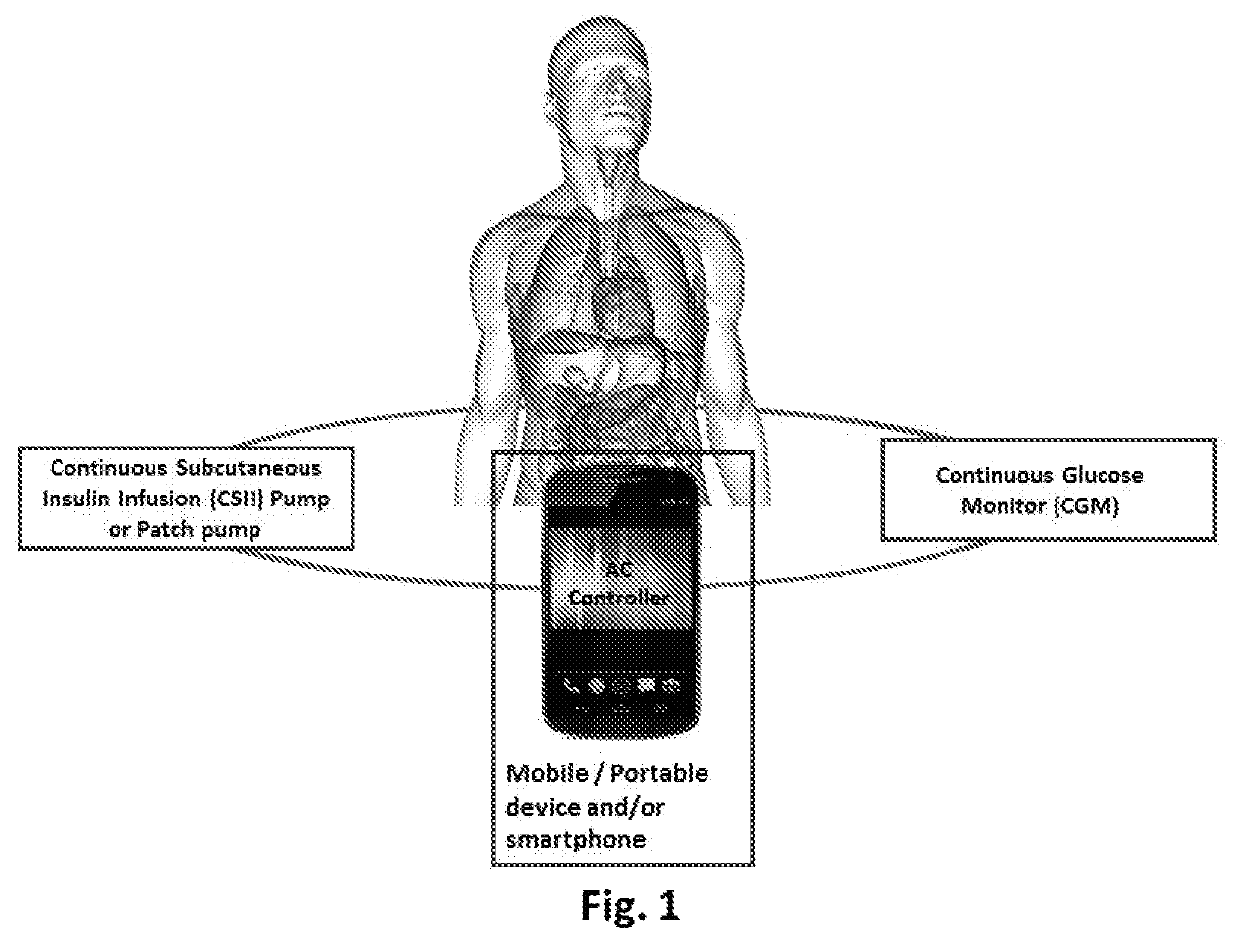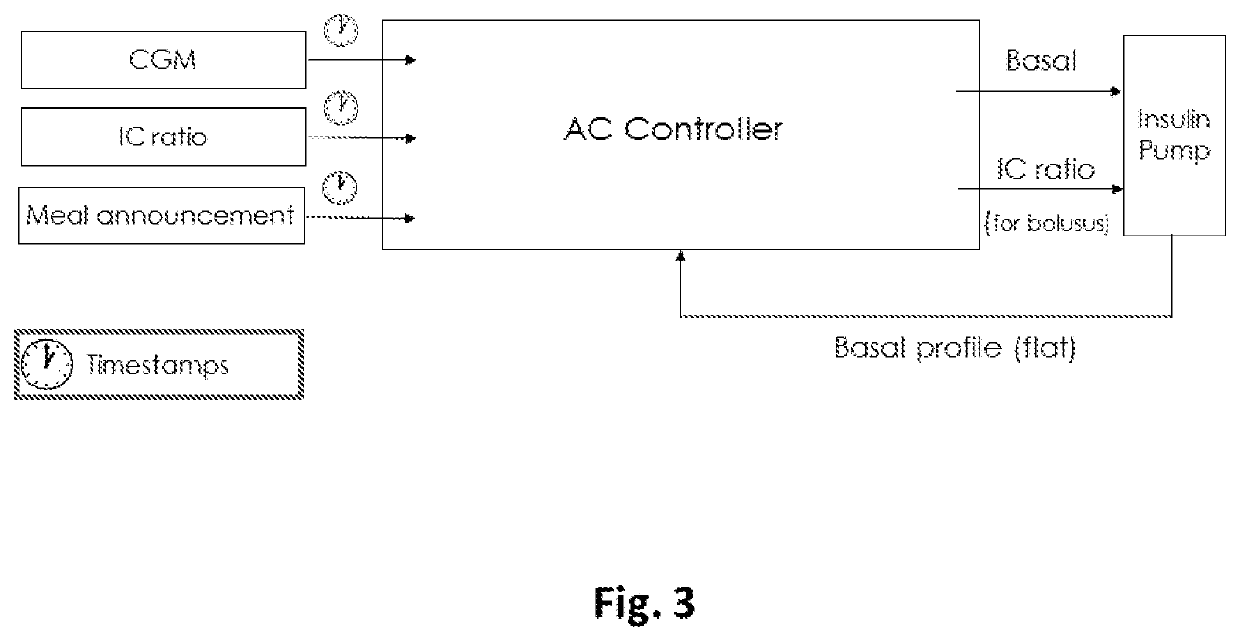Estimation of insulin based on reinforcement learning
a technology of reinforcement learning and insulin, applied in the field of insulin administration, can solve the problems of limiting monitoring and intervention in real time, affecting the accuracy of insulin absorption, so as to achieve the effect of optimisation of algorithm performance and minimal computational tim
- Summary
- Abstract
- Description
- Claims
- Application Information
AI Technical Summary
Benefits of technology
Problems solved by technology
Method used
Image
Examples
Embodiment Construction
[0057]The invention is set forth and characterized in the independent claims, while the dependent claims describe other characteristics of the invention.
[0058]The present application claims the benefit of the priority of PCT / IB2016 / 054242 filed on Jul. 15, 2016 in the name of University Bern, the entire disclosure of which is incorporated herein by reference.
[0059]All scientific and technical terms used herein have meanings commonly used in the art unless otherwise specified. The definitions provided herein are to facilitate understanding of certain terms used frequently herein and are not meant to limit the scope of the present disclosure.
[0060]As used in this specification and the appended claims, the singular forms “a”, “an”, and “the” encompass embodiments having plural referents, unless the content clearly dictates otherwise.
[0061]As used in this specification and the appended claims, any direction referred to herein, such as “top”, “bottom”, “left”, “right”, “upper”, “lower”, ...
PUM
 Login to View More
Login to View More Abstract
Description
Claims
Application Information
 Login to View More
Login to View More - R&D
- Intellectual Property
- Life Sciences
- Materials
- Tech Scout
- Unparalleled Data Quality
- Higher Quality Content
- 60% Fewer Hallucinations
Browse by: Latest US Patents, China's latest patents, Technical Efficacy Thesaurus, Application Domain, Technology Topic, Popular Technical Reports.
© 2025 PatSnap. All rights reserved.Legal|Privacy policy|Modern Slavery Act Transparency Statement|Sitemap|About US| Contact US: help@patsnap.com



